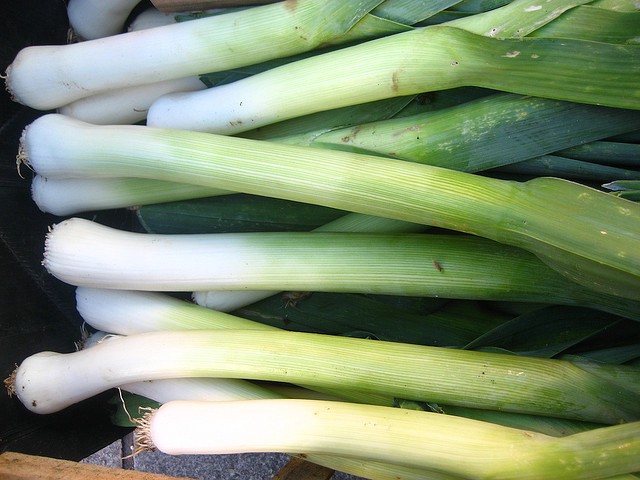New York City, November 3, 2014

★★★★ More burnished sunlight. A long tented runway was set up outside the movie theater, to protect a red carpet from the gentle threat of cold. People were not bundled up thoroughly enough to blur the individuality of their radiating body heat in the solid-packed crush of the 1 train. By afternoon, where the sun could reach directly — places widely separated — it was warm. The teens and the scaffolding cast long commingled shadows at the corner. The wind by the river was pushy and made it hard to hear, but it remained painless. The apartment filled with a late golden glow, interrupted briefly by the passage of the facade-repair crew in their rig, moving from top to bottom just outside.
Rolling the Vote
The Democratic-controlled government of Illinois has loosened the rules, permitting same-day registration, extending early voting times, ending photo ID requirements in early voting and making it easier for college students to vote. Describing the changes as a pilot project, the Illinois Legislature adopted them for this election only.
Mr. Thielen, leader of the Republican lawyers’ group, called the temporary imposition of the measures “outrageous” and a transparent effort by Democrats to seek advantage in this year’s close races for governor and other offices.
Let’s pretend, briefly, that racism, classism, and party politics aren’t an issue here. How is it anything but bizarre to argue against measures that allow more people to vote, especially given 1) the United States’ comically depressed voter turnout compared to much of the world and 2) that the notion of widespread voter fraud is a myth unsupported by data (the preferred currency of white men everywhere)?
Disclaimers: I am a white man and I’ve never voted.
The Goat Heads of Prospect Park
The Goat Heads of Prospect Park
Uh. Looks like goat heads hanging from traffic light at 9th st. And 5th ave. in Park Slope @Gothamist @SlopeNews pic.twitter.com/a20qqLSlkD
— Katherine Hurd (@katiehurd) November 4, 2014
It’s autumn in Brownstone Brooklyn. Trees! Crunching leaves. Dogs going wild, sensing that the Indoor Times are coming again. Barely ambulatory children in full UNIQLO demanding more coffee. Goat heads.
This year the goat heads manifested above the intersection of 5th Avenue and 9th Street, where they dangled like old sneakers. These goat heads were notable not just for their proud location but for their presentation: hanging in a pair, fresh and skinless.

This display was four avenues away from the 9th
Street entrance to Prospect Park, the goat head capital of Brooklyn. Most recently, in March, a severed goat head was discovered on the east edge of the park, intact and covered in snow. In 2010, on the south side of the park, someone found a goat carcass in a bag; a couple days later, the head turned up on a nearby walkway. Earlier that year, small animal remains and blood stains discovered in the park led the Brooklyn Paper to ask: “Who is the Butcher of Prospect Park?” These are just the goat heads that made it to the internet, of course — there is no telling how many goat heads went un-Instagrammed.
This doesn’t surprise me — in the early 70’s my mom and I stumbled across a severed goat’s head in Prospect Park http://bit.ly/9tGNeL
— Guav (@guav) March 25, 2010
The consensus explanation for the remains is Santería ritual sacrifice, a controversial practice kept private in other parts of the country but complicated by Brooklyn residents’ dependence on communal outdoor space. If this is what’s going on — and it’s never really been examined, just mentioned and accepted as plausible by west-of-the-park neighborhood blogs, because of the large Caribbean community nearby — then there is sympathetic Supreme Court precedent to provide some context: in Hialeah, Florida, practitioners’ right to sacrifice animals was challenged and eventually upheld. The most the park has officially said on the matter, however, is strictly practical: “It’s illegal dumping.”
Shoe-tossing goat heads is not, to the best of my knowledge, a religious tradition. Perhaps it’s the beginning of a secular neighborhood tradition? Or is it just teens messing around, goat heads having been planted in their imaginations years before? A late Halloween prank? In any case: That particular intersection is on the cusp of so many conflicting things, sandwiched in one direction by neighborhood institutions like Daisy’s Diner and Smith’s Tavern and in the other by two craft beer bars, one with pinball machines and the other with shuffleboard. On the corners are a bodega, a Chase branch and a combination Dunkin’ Donuts/Baskin Robbins. What better way to tie it all together than yearly goat heads? May they hang forevermore.
A Plug for the Leek

Pity the poor onion. It is ubiquitous but always in the background, a key but supporting player in nearly every savory dish. It is the bassist of the food world: without onion, food tastes tinny and lacking, but nobody really wants to eat it alone. This is a mistake, because the onion and all its allium relatives have a flexibility that few other vegetables have: a texture that can be either crisp or luxuriously soft, a flavor that can range from pointedly savory to sugary sweet, and an unusual physical structure that can be molded into whatever shape the cook desires. Of the alliums, my favorite, an underused sandy gem of the vegetable kingdom, is the leek.
Leeks aren’t fantastically popular here, but they should be, because their flavor and texture are like a refined, grown-up version of regular onions. Their individual leaves are thin and delicate, almost like noodles, and they can be used to add onion flavor to dishes that would often simply end up tasting like onion if a typical yellow or red onion was used. That’s why they’re often used with mild primary ingredients like potatoes and eggs; they augment rather than overpower. But they have abilities far beyond the supplemental.
Leeks are ridiculously hardy plants; their season is actually just beginning now, and some say their flavor will actually peak sometime in January, when most other plants, like most New Yorkers, have given up and are just Seamlessing falafel every other night. Leeks also grow in an interesting and very artificial way; though they look like stems, the part we eat is actually a tightly curled bunch of leaves, kind of like brussels sprouts. When they grow, to cope with the garbage winter weather they love so much, the part of the leek exposed to the elements becomes tough and hard and inedible — so farmers have to actually keep topping it with soil, leaving only an inch or two of leaf exposed to the air, in order to maximize the amount of leek that remains underground, pale white and delicious. Interesting, right? Bring that cool fun fact up at your next party.
Leeks also grow outward: the root grows a new leaf, one by one, as it gets older, creating layer upon layer of leeky goodness. But because it’s underground, that also means the leek typically traps a bunch of dirt and sand in between each layer of leaf. This means that leeks require cleaning in a way that other onions do not, which may scare some people off. But it shouldn’t! They’re very easy to clean. I go with the French method: lop off the dark green tops (keeping the root, white, and light green parts), then carefully slice lengthwise, the whole length of the leek, all the way down to the root. But don’t cut through the root! Keep a few millimeters there, just so it stays together. Then get a big bowl of cold water, grab the leek by the root, and wave the leaves around in the water, wiping with your fingers in between the layers. The dirt and sand and assorted schmutz will all fall out, down to the bottom of the bowl. Then let the leeks air-dry, or put them in a salad spinner, or do what I do, which is to continue to hold them by the root and flap them frantically through the air while making bird sounds.From there, typically you’d continue your lengthwise cut through the root, leaving you with two leek-halves, before discarding the root itself. Some of the following recipes will have you keeping them in this form, some will have you slicing lengthwise into thin strips.
Here we face a quandary. The leeks can now be used in place of onion in pretty much any dish, and indeed they will be superior to onions in some dishes (omelettes come to mind), but I think it is more fun and more challenging to try to make the leek the center of the dish. Some suggestions!
I can’t very well talk about leeks without mentioning the classic leek and potato soup. To start: slice two halved leeks width-wise into small strips. In a soup pot, put in some olive oil and when it’s hot, throw in the leeks. Let them cook down slowly, over low heat, until soft and melty. Add in a couple cloves of sliced garlic. Then throw in about four medium-sized standard russet potatoes, which you have washed and chopped into small pieces but have NOT peeled, because thou shalt never peel potatoes. Stir around, then pour in a small amount of white wine and stir again, so that nothing is stuck to the bottom of the pan. Then cover with some sort of liquid: chicken stock is best; vegetable stock would be fine; water is passable, although you’ll have to spice things a bit harder at the end. There should be just enough water to cover the potatoes. Turn the heat up to high until the water boils, then turn it down to medium-low and put the lid on. Cook until the potatoes are tender. Then blend somehow. An immersion blender is best, because you don’t have to do any more dishes, but if you want to scoop this in batches into a food processor or a blender that’s fine too. Season liberally with salt and black pepper, add in a squeeze of lemon, and top with chopped parsley. Serve with heavily buttered toasted bread.
Now let’s move from France over to Spain! There is a tradition in Catalonia involving a sort of stepsister to the leek called a calçot, which is ceremonially grilled and eaten with romesco sauce. Those of us without access to onion farmers may find it hard to find calçots, but leeks are pretty easy to find, so we can make a dish very similar to this instead. Take your halved leeks and brush them with olive oil and season with salt and pepper, then either put them on the grill to char them (this is more traditional) or do what I do, which is put them on a baking tray and then in a 450-degree oven until soft. While they’re grilling or roasting, make your romesco.
Romesco is a pureed Spanish sauce mostly made of roasted red sweet peppers and some sort of nut. To make: cut red bell peppers or little sweet peppers into strips, discarding the ribs and seeds, toss in olive oil, and roast at 400 degrees until very soft. I usually throw in some sort of spicier chile in there too; serranos work well. Alternately, you can buy a jar of roasted red peppers and it’ll be fine, but, like, if you’re buying a jar of vegetables what are we even doing here? Then toast about a quarter cup of raw almonds, and a couple of slices of bread, if you don’t have any stale bread around. You can just do that in the toaster oven for like five minutes. In a pan, saute a chopped tomato and four cloves of chopped garlic in olive oil, then throw in a pinch of smoked paprika (sometimes sold as pimenton) halfway through.
Get out the food processor and put in about a cup’s worth of the peppers (drained of their oil), the nuts, the bread (which you have crumbled), a glug of sherry vinegar (or red wine vinegar if you don’t have sherry), and the contents of the pan of tomato and garlic, including the oil. Blend until smooth, adding salt to taste. THIS IS A HUGE PAIN, I KNOW. But romesco is good on pretty much everything: fish, poultry, meat, vegetables. It’s good hot and cold. It’s good to dip crudites into. In this case, lay your grilled or roasted leeks on a plate and spoon a whole mess of warm romesco over the top of it. Eat greedily while drinking Spanish wine.
From Spain, let’s move to…I don’t actually know where this dish is from. It feels sort of French, sort of Italian, sort of Southern, and it is luxurious and extremely unhealthy: caramelized leeks with polenta. In a dutch oven on medium-low heat, throw in about half a stick of butter. I know. Sorry. Slice two leeks width-wise so you have little strips, and when the butter’s melted, throw them in. Let them cook for a few minutes, then add just a pinch of sugar, and then keep cooking them, stirring occasionally, until they’ve basically disintegrated. While that’s going on, in a saucepan, bring one cup of water and one cup of milk or cream to a boil, then turn the heat immediately down to low and drizzle a half cup of coarse cornmeal very, very slowly into the pan, whisking the whole time. Stand over the god damn stove for the next half an hour or so, stirring constantly like an idiot, while the polenta, or grits, or whatever, cooks. Never stop stirring. When it’s thick and creamy, grate in a whole mess of parmesan or pecorino and season with salt. In another pot, bring some water to a boil and poach an egg or two. Put polenta in bowl, put leeks on polenta, put eggs on leeks. Eat gluttonous meal. (This could also be accompanied by a filet of trout or arctic char, pan-fried until the skin is crispy, instead of eggs.)
Finally, an easy leek latke recipe. Slice four leeks width-wise very thinly, making lots of little strips. Throw in a big mixing bowl. Add a quarter cup of flour, a pinch of cumin and a couple pinches of salt. Beat two eggs and mix them into the bowl, creating a batter. In a cast iron pan, bring about a quarter cup of vegetable oil up to heat, about medium-high, then drop in spoonfuls of latke batter. I find this is easiest with an ice cream scoop. Don’t crowd the pan; you shouldn’t be able to cook more than, like, four of these at a time. Cook for a couple minutes until the bottom is brown, then flip and do the same to that side. Let sit on paper towels to drain the oil off. Eat with sour cream or applesauce.
Leeks are a bit more expensive than your standard onion, and they require just a touch more work to prepare, but they can add a whole new dimension to your food: they can manage to taste buttery and rich and creamy with very little effort, unlike the stronger and more pungent members of the onion family. For the next few months, try experimenting with the leek! Use it in place of onion, scallion, or garlic in your regular recipes and see what happens. Here’s a spoiler: real good food is what’s going to happen.
Photo by Jeremy Keith
Crop Chef is a column about the correct ways to prepare and consume plant matter, by Dan Nosowitz, a freelance human who enjoys hot salads and lives in Brooklyn, naturally.
Simile Fits
“A tape measure is like a gun at a construction site,” Mr. González said. “Like a police officer, you don’t pull it out unless you’re going to use it.”
Are You Too Stupid And/Or Too Slutty To Vote Today?

Weirdo columnist Jonah Goldberg comes out swinging at the vanguard of a movement to prevent Lena Dunham from voting. (NOT JOKING.) This is a philosophy we can all get behind. Why, you ask, should Lena Dunham not be allowed to vote? Let’s investigate!
• “Election month is bad.” This is a dog whistle about early voting. They call it “election month” to make early voting sound C R A Z Y. Whites and/or Republicans are against early voting, because sometimes THE BLACKS vote early. Why are these people opposed to voting at all, you might wonder? Why are they in favor of restrictive voter ID laws? (See: Texas.)
• Lena Dunham says voting makes her feel good. Jonah says: “Of all the reasons to vote, using ballots as a balm to cure low self-esteem has to be the most pathetic.” Ha ha sure, probably. Also, why do you care?
• “Voting should come at the end of civic engagement, not the beginning.” Right, you should earn your right to vote with a program of education and service. You don’t just GET THE RIGHT TO VOTE IN AMERICA by turning 18 and being an American and not a felon! You should have to pass some sort of test probably.
• “Dunham, who can be seen dancing in her dingy underwear for a Rock the Vote video encouraging young people to vote (and vote liberal) in these midterms.” NOBODY LISTEN TO THIS SLUT.
• Pro-voting organizations overstate the importance of elections, Goldberg points out. Sure! His example: Look at Mark Udall v. Cory Gardner in the senate race in Colorado. He writes that lady voters might be surprised how much the Republican candidate likes women: “Udall’s GOP challenger, Rep. Cory Gardner, actually favors making birth control available over the counter.”
GREAT POINT. Stand down, ladies! So you could basically vote for either of them! Why are you making this election so DIVISIVE? Except, you know, that Cory Gardner was a cosponsor of the Defund Obamacare Act, the No Taxpayer Funding for Abortion and Abortion Insurance Act, and the Life at Conception Act. So clearly there’s literally NO difference between these candidates, you silly uniformed lady voters in your dirty underpants, Cory Gardner likes condoms just fine (and will vote against abortion and assert that life begins at conception, unlike his opponent Mark Udall, who is pro-choice, so everything’s fine nothing to see here).
Happy One-Day Anniversary to One World Trade Center

One World Trade Center’s first tenant moved in yesterday. It’s a whole day old! In celebration, let us take a moment to not forget what a monumental failure One World Center is — as a place in the fabric of the city (ugh), as a bundle of political and cultural ideas (toxic), as a record-setting tall building (a phony), and as a work of architecture (blegh).
Hudson Eats, the food court across the street is pretty nice though; they have a Black Seed bagel shop, whose everything bagels are top-notch, even though they are from Canada, our sworn enemy.
Photo by gigi_nyc
New York City, November 2, 2014

★★★★ In the darkness around the extra hour, the three-year-old knocked his covers most of the way onto the floor, got cold, and began yelling for someone to come and fix things. From inside the bathroom, the winds were playing flute tones on the building, clear tones moving up and down in intervals. When day arrived, the clouds were in closed ranks, which gradually opened up and departed. Getting the children out into the shortened afternoon was urgent. Out on the avenue, yellow little leaves flew straight sideways one story up, then made a near-right-angle turn and dropped. A white pigeon chased the gray pigeons away along a ledge and then was beaten back by the counterassault. Tilting and shuffling ex-runners supplemented their foil blankets with deep-winter gear; the dispersing spectators were dressed for mountaineering. The sunlight, even in retreat, had a silvery intensity to it. The neck feathers on the playground pigeons were amethysts. The younger boy insisted on shedding his vest, while the older huddled in his thick sweatshirt, complaining. Herds of sycamore leaves swept across the pavement like panicked bison, hurling themselves in a pile at the foot of the fence. The three-year-old filled both fists with fallen twigs, which he proclaimed were his Batarangs, and with which he set off after an older boy in a Spider-Man hat. The intersection of 70th Street and Amsterdam was the coldest and windiest spot in the neighborhood, by a vast and mysterious margin. Counterterrorism officers wore their counterterrorism jackets. At piano-lesson time, the older boy’s new winter coat was pressed into service. The static charge left his hair pressed flat to his head.
John Carpenter, "Vortex"
John Carpenter, “Vortex”
John Carpenter, the director and composer, with a lesson in stubbornness: Here is a song that would have been just as comfortable on the They Live soundtrack in 1988 as it is on the internet in 2014.
